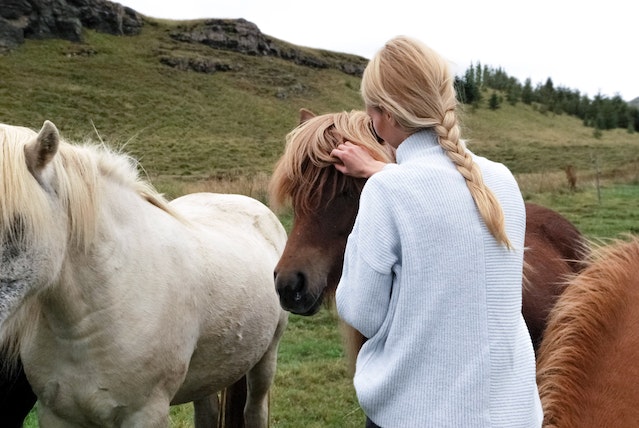
Miniature Horses as Service Animals: What You Need to Know
Service animals are animals that are trained to perform tasks in order to assist people with disabilities. Common examples are service dogs used to guide blind and deaf people, alert a person with seizures, and provide comfort for those with PTSD or depression.
Although dogs are commonly used because they're convenient to maintain and easy to train, miniature horses can also serve as service animals. They're intelligent and friendly, and they can provide assistance as long as they're trained for the job.
While miniature horses are cute and friendly, some requirements must be fulfilled for them to be formally considered service animals. The Americans with Disability Act (ADA) also have separate provisions for permitting service horses to enter certain establishments.
In this article, we'll explore these requirements and provisions as well as the pros and cons of miniature horses as service animals.
What can miniature horses do?
Miniature horses can perform the tasks that service dogs do, but they're most commonly known for guiding people who are visually impaired. In fact, horses have been serving humans as guide animals for ages.
Like service dogs, miniature service horses can also work as emotional support animals, providing comfort and companionship to their owners. When trained, they can also retrieve and carry items as well as hand them to their owners.
One example of a miniature service horse is Fred, who assists someone with an autoimmune disease. His handler suffers from Crohn's disease and isn't able to walk or move when having a severe flair. So, Fred is the one who picks up things and hands them to the owner.
What are the requirements for miniature horses as service animals?
According to the ADA, a miniature service horse should weigh between 70 to 100 pounds with a height ranging from 24 to 30 inches. In order to be accommodated in certain establishments and transportation methods, the service horse should also be housebroken, can be controlled by the owner, and doesn't compromise the safe operation of the facility.
In terms of flying, however, miniature service horses are no longer allowed to board planes. The US Department of Transportation has amended its regulations, defining service animals as a fully-trained dogs. Because of this, only service dogs are allowed to be with their owner in the cabin.
The pros and cons of miniature horses as service animals

Even if miniature horses are not allowed on flights, some people still choose them as service animals. This is because of their excellent eyesight and impeccable strength. In addition, a service horse also has a longer lifespan (around 20-30 years) and fewer allergens, making it an excellent choice for people allergic to dogs.
If you're considering getting a miniature horse as a service animal, you should also take note of some challenges that you may face. One is the fact that it's a horse. Horses are easily spooked, so training them is more extensive and requires more patience. In addition, you may need more time for them to get more comfortable with people and in new environments.
Conclusion
Miniature horses are great service animals when they're appropriately trained. They're intelligent and independent, but they still need to be maintained. As a handler, you must ensure that your service horse is well-fed with regular outdoor exercise and veterinary checkups.
Do you own an assistance animal? Register your pet today. The Service Animal Registry of California invites you to have your assistance animal registered in order to designate its status. We also encourage you to take our online classes so you can be fully aware of your rights and gain more knowledge about your support animal.
Finally, we present to you our book entitled, “ASSISTANCE ANIMAL LAWS: LEARN YOUR RIGHTS REGARDING SERVICE ANIMALS, EMOTIONAL SUPPORT ANIMALS, THERAPY PETS, AND OTHER DOGS, CATS, AND ASSISTANCE ANIMALS” to provide you with a complete education on assistance animals. Purchase your copy of the book by clicking the image below.

